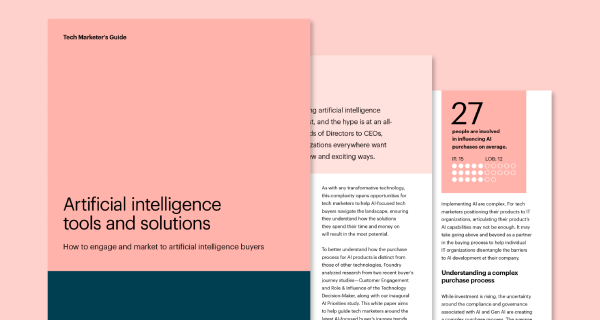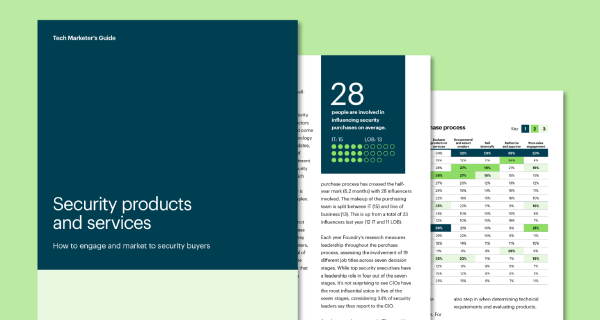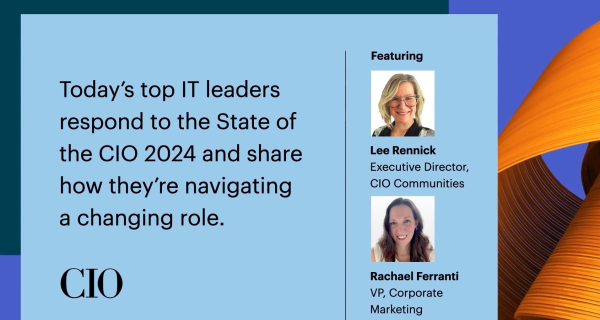In today’s competitive business landscape, many marketers are faced with a common challenge: how to execute a successful marketing campaign that will engage target audiences and drive business. Fortunately, the solution is readily available within the datasphere. In today’s data-driven world, quality insights have the power to transform an organization’s marketing initiatives to drive results and maintain a competitive edge. So, how are high-level marketing execs deciphering data to close business? At IDG ENGAGE Boston summit, four senior marketing execs shared their perspectives on taking a data-driven approach to marketing. Let’s see what they had to say.
Creating a Data-Driven Culture
While every business faces their own unique trials and tribulations, May Mitchell, VP of Marketing at Cylance, Inc., believes that “data has us all speaking the same language, from top executives scaling down.” Using data as shared language, organizations can unite business units and foster organization-wide alignment. For example, data-driven marketers are able to communicate their decisions and strategies to stakeholders using data as support. Put simply, 1st party data is a highly powerful tool that conveys strategy in a context that all business units can understand. And, based on the accuracy of 1st party data, these quality insights have the contextual relevance to support the decision to target tech decision-makers at a given point in the buying process. As business and marketing leaders apply their insights across internal business structure/units, organizations begin to adopt a data-driven culture from the top down.
But what does data-driven culture mean? Mitchell points to the implementation of dashboards that display common goals for marketing and sales departments as an example. This centralized function, powered by the shared language of data, promotes accountability on an individual, departmental and organizational level that allows all parties to strive towards a shared goal. For this initiative to be successful, everyone must use the same metrics. At Cylance, dashboards display data compiled via one streamlined formula to promote teamwork and help departments speak the same language. Using the same measurement tools creates opportunity for a deeper analysis of similar data points and positions an organization for optimal alignment.
Sales Alignment for Success
Jennifer Ortiz, Acting VP of Corporate Marketing at Progress, says that “data is storytelling with a soul.” She believes that marketing strategies based on best practice have shifted more towards a data-driven approach. In short, she believes that marketers must look at the data to decide what story they want to tell. And, to be successful in doing so, effective communication between marketing and sales operations throughout the buyer’s journey is essential. A partnership between these teams allows marketers to tailor the most contextually relevant message to the right audience, in the right place, at the right time.
Liz Fuller, Head of Alliance Marketing at Citrix, echoes Ortiz’s emphasis on using data to tell a story. In regards to whether a data-driven approach has helped with partner programs, Liz mentions the importance of using data to identify the most relevant customer story and find a core focus. She notes that “knowing which marketing mix is right comes from the data” and that the relationship with sales empowers marketers to create more integrated and aligned campaigns. This alignment generates a deeper bench across business units that drive marketing efforts further, creating greater impact along the customer journey.
Analyzing different types of data is an important aspect of crafting a compelling story. Debbie Umbach, VP of Marketing at BitSight, explains how she harnesses data to uncover trends in the buyer’s journey using both qualitative and quantitative methods. Umbach stresses the importance of employing qualitative methods like content mapping, which help marketers create a path to engage tech decision-makers, in conjunction with data analysis to reinforce content mapping decisions. In regards to data, says Umbach, “it really comes down to ownership, insights and action” – responsibilities that should be upheld by the alignment of marketing and sales operations to identify trends and improve strategy together.
The Rise of Renaissance Marketers
Given the current data-saturated market and an industry-wide shortage of data and analytics talent, marketers are beginning to acquire data science skill-sets. When asked how the current data-driven market impacts marketing departments, our panelists had a lot to say. A common theme is the acknowledgement that marketing teams have become ‘renaissance workers’ that do it all. Today, marketers must be able to analyze data using context and then communicate those insights to stakeholders. Our panelists also spoke to the importance that marketers, including marketing leadership, hold themselves accountable to understanding sales impact, namely the go-to-market process, to uphold their end of the tight alignment with sales.
Marketing in an age where consumers are more active in their decision-making than ever before can be a challenge and an opportunity. Fortunately, harnessing the data at our fingertips is the solution. Data is an immensely powerful tool at our disposal, and our panelists are at the forefront in propelling data-driven marketing forward.
Learn more about the IDG ENGAGE Boston marketing panel and tech panel on Twitter.





